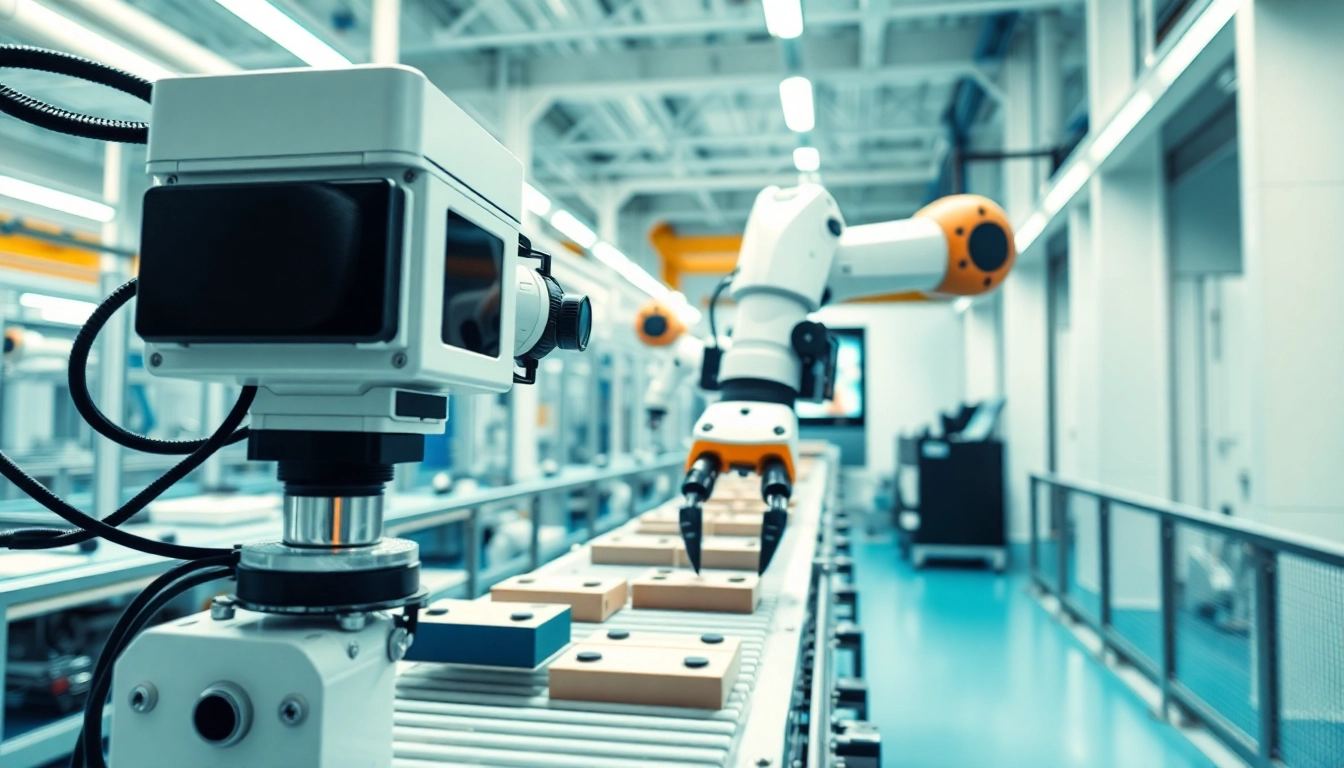Introduction to Machine Vision
Machine vision is revolutionizing the way industries operate by offering innovative solutions for automation and decision-making. This technology uses a combination of computer vision, artificial intelligence, and imaging science to enable machines to interpret visual data the way humans do. Through advanced algorithms and sophisticated sensors, machine vision acts as a high-level input for industrial processes, significantly enhancing efficiency and accuracy.
What is Machine Vision?
At its core, machine vision refers to the capability of machines to “see” and interpret visual information typically captured by cameras or sensors. This technology is not merely about image capture; it includes various processes that transform these images into actionable data through image processing, analysis, and real-time decision-making. Machine vision systems usually incorporate hardware such as cameras, illumination sources, processing units, and analytics software.
The Importance of Machine Vision in Industry
The industrial sector is experiencing a paradigm shift with the integration of machine vision. Its application leads to enhanced quality control, productivity improvements, and significant cost savings. Industries ranging from manufacturing to healthcare utilize machine vision to automate their processes, minimize human errors, and maintain consistent production quality. As companies continue to strive for operational excellence, machine vision has emerged as an indispensable technology.
Key Components of Machine Vision Systems
Machine vision systems consist of several critical components that work together to achieve efficient image capture and analysis:
- Cameras and Imaging Sensors: These are crucial for capturing high-resolution images in real-time. Various types of sensors, such as CCD or CMOS, are used based on application requirements.
- Illumination: Proper lighting is essential for clear image capture. Different light sources and techniques can be employed, such as LED lighting and backlighting, depending on the application.
- Processing Hardware: This includes the necessary computing machinery to analyze and interpret images. Processing units can either be on-premise servers or edge-computing devices depending on the deployment strategy.
- Software and Algorithms: These are the backbone of any machine vision system, enabling sophisticated image processing algorithms that facilitate feature extraction, pattern recognition, and machine learning.
- Output Devices: The results of the analysis are communicated to operators or machinery, often through data visualization dashboards or direct integration into manufacturing systems.
Applications of Machine Vision Across Industries
Machine vision has versatile applications across various sectors, yielding transformative results.
Quality Control and Inspection
One of the most significant applications of machine vision is in quality control and inspection processes. Companies can automate the inspection of products to ensure they meet defined quality standards. Machine vision systems can precisely detect defects in items on a production line, analyze product dimensions, and verify labels and packaging. This reduces the need for manual inspection, speeds up the process, and reduces waste.
Robotics and Automation
In robotics, machine vision allows machines to navigate their environments accurately and perform complex tasks. Automated robots equipped with vision systems can identify objects, discern color and texture, and make real-time decisions based on visual input. Such capabilities enable robots in warehousing, logistics, and even in surgical environments, thereby enhancing productivity and safety.
Medical Imaging and Diagnostics
Machine vision extends its promises to the healthcare industry, particularly in medical imaging. Technologies that analyze medical images enable quicker and more accurate diagnoses, which can be pivotal in patient care. From detecting tumors in radiological images to assisting in surgeries, machine vision systems significantly enhance medical professionals’ capabilities.
Core Technologies Behind Machine Vision
Cameras and Imaging Sensors
Cameras are fundamental to machine vision systems. They capture images that must be clear and detailed to facilitate accurate analysis. Various types of imaging sensors are available, including monochrome and color sensors, which can be selected based on specific application needs. For instance, color imaging sensors are vital for applications where color differentiation is critical, such as in food and beverage inspections.
Image Processing Algorithms
Image processing algorithms perform the essential functions of image enhancement, segmentation, and feature extraction. Advanced algorithms utilize techniques like edge detection, pattern recognition, and machine learning to interpret visual information effectively. Manufacturers often customize these algorithms to meet their specific operational standards and requirements.
Integration with AI and Machine Learning
The integration of AI and machine learning into machine vision systems has propelled the technology into a new era. Through machine learning models, machine vision systems can learn from vast datasets and improve their performance over time. AI-enabled systems can recognize patterns, predict potential defects, and optimize processes autonomously, driving quality and efficiency in production.
Common Challenges in Implementing Machine Vision
Despite its advantages, implementing machine vision systems can present several challenges that organizations must navigate.
Understanding Environmental Variables
Machine vision systems can be significantly affected by environmental factors such as lighting conditions, temperature, and motion. For instance, variable lighting can influence image quality, leading to misinterpretations. Manufacturers should assess their environments and adjust their vision systems accordingly, potentially utilizing adaptive lighting solutions or enhancing camera hardware to manage these challenges.
Calibration and Setup Difficulties
Setting up machine vision systems requires meticulous calibration to ensure accurate readings and data analyses. Calibration involves positioning the camera correctly, focusing on the right areas, and adjusting settings like exposure and gain. Organizations need to invest time and resources in proper setup and may consider hiring experts to facilitate this process, especially if complex systems are being deployed.
Cost Considerations and Return on Investment
The initial investment in machine vision technology can be substantial, encompassing equipment, software, and training costs. Businesses must analyze potential ROI by evaluating the long-term benefits of process automation, consistency in product quality, and the decrease in labor costs associated with manual inspection roles. Developing a clear business case is essential for validating investment decisions.
The Future of Machine Vision Technology
The future of machine vision is poised for rapid growth, driven by technological advancements and increasing demand in various sectors.
Emerging Trends and Innovations
Key trends impacting machine vision include the rise of smart factories, increased usability in remote monitoring, and the integration of 5G technology. Smart factories leverage interconnected devices that utilize machine vision to optimize operations dynamically. Additionally, real-time data streaming enabled by 5G can enhance the accuracy and responsiveness of machine vision systems significantly.
Impact of AI on Machine Vision
As AI continues to evolve, its impact on machine vision will become more pronounced. AI will enhance the ability of vision systems to adapt to new situations and learn from previous experiences, strengthening automated quality assurance and increasing the reliability of predictions regarding product quality.
Case Studies: Successful Implementations
Numerous successful case studies illustrate the effectiveness of machine vision. For example, a leading automobile manufacturer integrated machine vision into its assembly line to conduct real-time parts inspection, significantly reducing defects by over 30%. In the pharmaceutical industry, machine vision has been utilized to verify packaging integrity, resulting in compliance with regulatory standards while increasing throughput.



